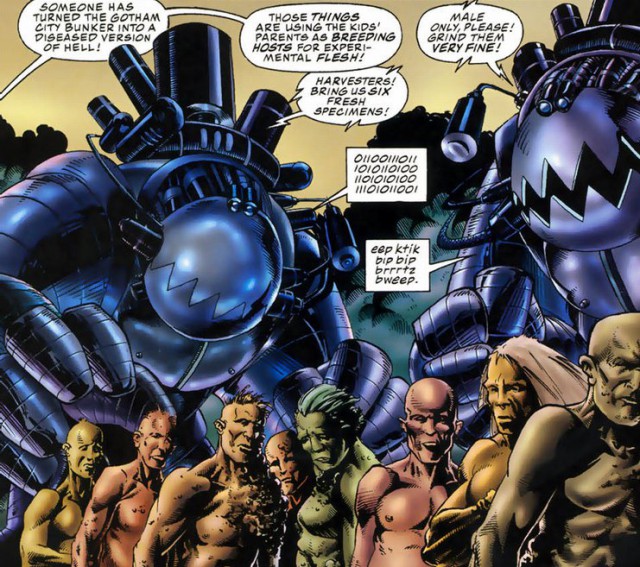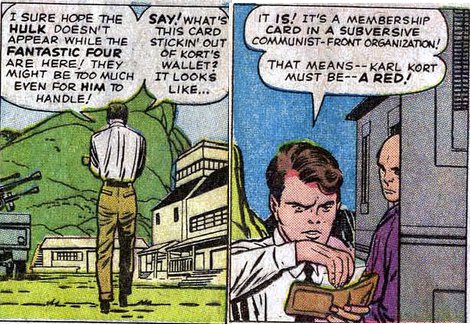
Comics, like all forms of art, are a product of their times. In the early 60s, American mentality was still mostly based on the 50s, with their sexism ((and there’s an even better one in this very issue, but I didn’t want to go after the same theme twice in a row, so you’ll have to wait for a future installment of Bad Comic Panels.)), and a huge dose of paranoia, especially in relation to Communism and the Soviet Union. At those times, many people really thought that a Soviet invasion was imminent, and that America was already full of Communist spies and sympathizers. If you read the first year of, say, Iron Man, the Avengers, or the Hulk, you’ll find a lot of “red menace” stories, with “commie” villains so obviously evil that, in a way, it negates the paranoia — there would be no fear of Communist spies if they were so easy to spot. 🙂
The example above is one I always found funny, ever since I read it a couple of decades ago. Obviously, Rick Jones’ dialog is great (“That means — Karl Kort must be — A RED!”), but there’s also that other little morsel: that a Communist spy kept his membership card in his wallet! 😛 Rick’s description of the organization Kort belongs to is also unintentionally humorous, and I have always found it funny to imagine that the card itself read something like:
![]() RED MENACE
RED MENACE ![]()
Subversive Communist-front Organization
Member name: Karl Kort
After all, “subversive” and “Communist-front” weren’t terms that the average teenager was likely to use, were they? So, maybe Rick was in fact reading from the card! 🙂 Anyway, sadly, this colorful and interesting villain, filled with intelligent and original motivations, didn’t ever appear again. Who knows what interesting, innovative stories featuring Karl Kort, and the organization he was a member of, could have been written…

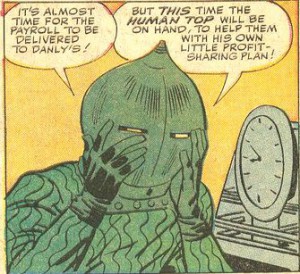
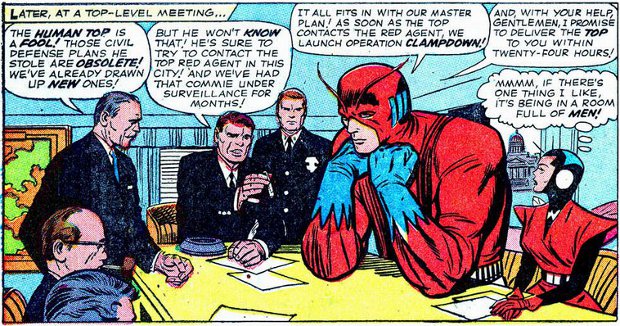
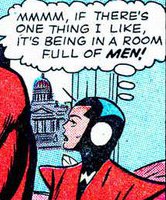
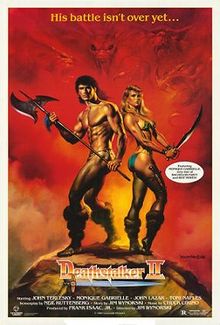 In my teen ears (read “the Eighties”), I remember watching a movie, rented on a VHS tape (remember those?) from a video club (remember those?). What I remembered from it was that it was a fantasy movie, made with a low budget, with some female nudity, and which didn’t take itself too seriously. Its name was Deathstalker II: Duel of the Titans.
In my teen ears (read “the Eighties”), I remember watching a movie, rented on a VHS tape (remember those?) from a video club (remember those?). What I remembered from it was that it was a fantasy movie, made with a low budget, with some female nudity, and which didn’t take itself too seriously. Its name was Deathstalker II: Duel of the Titans.
